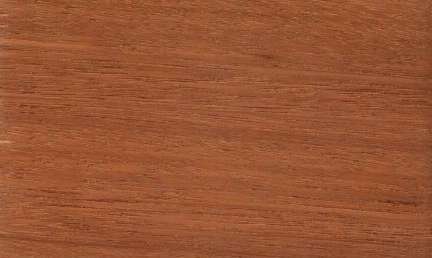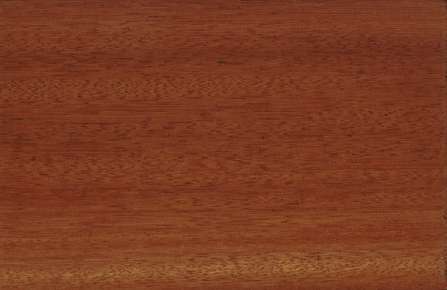 
Deglupta (Eucalyptus deglupta)
Family: Myrtaceae
Common names: Amamanit, Amamarit, Aren, Bagaras, Bagras, Banikag, Deglupta, Didia, Dinglas, Galang, Galong, Kamarere, Komo, Koyo, Kumo, Leda, Leda merah, Leda putih, Ledan, Magoyangit, Merah, Minanao gum, Mindaho gum, Mindanao gum, Moluccas, Ongkolan, Tampai, Tombulilato, Tomela, Tomelo
Distributed in: Australia, Brazil, Chile, Costa Rica, Fiji [Polynesia], Fiji, Indonesia, Madagascar, Malaysia, Papua New Guinea, Philippines, Solomon Islands, South Africa, Sri Lanka, Thailand (Africa, Central America, Latin America, Oceania and S.E. Asia)
Distribution overview: Native to the Philippines and other western Pacific islands, including Australia and New Guinea. Favored as a plantation species throughout the world in lowland humid tropics.
Common uses: Beams, Boat building (general), Boat building, Boat building: planking, Boxes and crates, Broom handles, Building construction, Building materials, Cabin construction, Cabinetmaking, Canoes, Charcoal, Concrete formwork, Construction, Cooperages, Decks, Domestic flooring, Excelsior, Factory construction, Factory flooring, Flooring, Form work, Foundation posts, Framing, Fuelwood, Furniture, Heavy construction, Interior construction, Interior trim, Joinery, Joists, Lifeboats, Light construction, Matches, Millwork, Mine timbers, Moldings, Paneling, Parquet flooring, Particleboard, Piling, Plywood corestock, Plywood, Poles, Porch columns, Posts, Precision instruments, Pulp/Paper products, Railroad ties, Rough construction, Shipbuilding, Sporting Goods, Sub-flooring, Tool handles, Turnery, Veneer
Environment profile: Generally secure within most of its natural habitat, but note exceptions.
Colors: the heart isReddish brown, Yellow to golden-yellow to orangeand the sapwoodWhite to yellow, Whitish.The grain isStraight, the textureMedium to coarseand the lusterSlightly lustrous
Natural durability: Very durable, Vulnerable to attack by powder-post beetles
Odor: No specific smell or taste
Kiln Schedules: Kiln Drying Rate (in days) is fairly rapid
Kiln Drying Rate: Fairly rapid (11-17 days for boards under 32 mm, to 31-51 days for boards greater than 63 mm)
Drying Defects: Slight surface checking, Slight twist/warp
Ease of Drying: Moderate
Tree Identification: Bole/stem form is straight
Comments: General finishing qualities are rated as good
Blunting Effect: Slight effect
Boring: Easy
Cutting Resistance: Good sawing properties
Gluing: Good properties
Mortising: Finishes well
Moulding: Satisfactory moulding
Movement in Service: Satisfactory moulding
Nailing: Holds nails well, Possible if prebored
Planing: Planes well, to a good finish
Resistance to Impregnation: Sapwood is permeable
Resistance to Splitting: Poor
Response to hand tools: Moderate working qualities
Sanding: Very good characteristics
Veneering qualities: Difficult to glue, No steaming needed during bolt preparation.
Screwing: Screwing yields good results
; Turning: Poor results
Painting: Good; Polishing: Very good; Staining: Stains well;
- Numerical data Metric
- Numerical data English
- Strength properties
- References
 |
 |
 |
 |
| Item |
Green |
Dry |
Metric |
| Specific Gravity |
0,51 |
|
|
| Density |
|
576 |
kg/m3 |
| Bending Strength |
620 |
950 |
kg/cm2 |
| Crushing Strength |
50 |
93 |
kg/cm2 |
| Hardness |
|
373 |
kg |
| Impact Strength |
|
|
cm |
| Shearing Strength |
|
104 |
kg/cm2 |
| Stiffness |
104 |
122 |
1000 kg/cm2 |
| Tangential Shrinkage |
|
|
% |
| Radial Shrinkage |
3 |
|
% |
| Weight |
560 |
400 |
kg/m3 |
| Maximum Load |
|
|
cm-kg/cm3 |
| Toughness |
|
183 |
cm-kg |
| Static Bending |
489 |
709 |
kg/cm2 |
|
 |  |  |  | | Item | Green | Dry | English | | Bending Strength | 8826 | 13515 | psi | | Crushing Strength | 714 | 1328 | psi | | Density | | 36 | lbs/ft3 | | Hardness | | 823 | lbs | | Maximum Crushing Strength | 5167 | 7799 | psi | | Shearing Strength | | 1492 | psi | | Static Bending | 6958 | 10094 | psi | | Stiffness | 1486 | 1745 | 1000 psi | | Toughness | | 159 | inch-lbs | | Specific Gravity | 0.51 | | | | Weight | 35 | 25 | lbs/ft3 | | Radial Shrinkage | 3 | | % | | Tangential Shrinkage | 7 | | % | |
Density (dry weight) = 38-45 lbs/cu. ft. 0
Density (dry weight) = 23-30 lbs/cu. ft. 0
Bending strength (MOR) = low 0
Shrinkage, Radial = moderate
Shrinkage, Tangential = moderate
Shrinkage, Tangential = fairly large
Shrinkage, Radial = small
Max. crushing strength = low
Max. crushing strength = high
Density (dry weight) = 31-37 lbs/cu. ft.
Max. crushing strength = medium
Bending strength (MOR) = medium
Shrinkage, Tangential = large
Hardness (side grain) = very soft
Shrinkage, Tangential = small
Shrinkage, Radial = very small
Shrinkage, Radial = large
Shrinkage, Radial = fairly large
Hardness (side grain) = soft
Modulus of Elasticity (stiffness) = very low
Max. crushing strength (stiffness) = very low
Density (dry weight) = 46-52 lbs/cu. ft.
Density (dry weight) = 15-22 lbs/cu. ft.
Bending strength (MOR) = high
Shrinkage, Tangential = very small
Shearing strength (parallel to grain) = low
Modulus of Elasticity (stiffness) = medium
Modulus of Elasticity (stiffness) = low
Modulus of Elasticity (stiffness) = high
Bending strength (MOR) = very low
Alston, A.S.,1966,Powder Post Beetle Lyctus Species,Fiji Forestry Department, Suva. Fiji timbers and their uses No.6Alston, A.S.,1982,Timbers of Fiji: Properties and potential uses,Fiji Forestry Department, SuvaBolza, E., Kloot, N. H. 1966. The Mechanical Properties of 81 New Guinea Timbers. Technological Paper No. 41. Division of Forest Products, Center for Scientific and Industrial Organization (CSIRO, Melbourne, AustraliaBolza, E., Kloot, N.H.,1972,The Mechanical Properties of 56 Fijian Timbers,Australia C.S.I.R.O. Division of Forest Products Technological Paper,No.,62Bolza, E., Kloot, N.H.,1976,The Mechanical Properties of 81 New Guinea Timbers,C.S.I.R.O. Div. Building Res. Tec.Paper (2nd series) 11Bolza, E.,1975,Properties and Uses of 175 Timber Species from Papua New Guinea and West,Irian,C.S.I.R.O. Div. Building Research Report,no.34Brown, W.H.,1978,Timbers of the World, No. 8 Australasia,TRADA, Red Booklet SeriesC.S.I.R.O., Division of Building Research,1977,CSIRO, Division of Building Research, Information service Sheet No. 10-11,Kamararee,CSIRO, Division of Building Research, Information service, Melbourne,,AustraliaCameron, S.,1945,Some Notes on Utilisation of Timbers in the South-West Pacific,New Zealand Journal of Forestry Volume 5(2) 117-127Chudnoff, M.,1984,Tropical Timbers of the World,U.S.A. Department of Agriculture, Forest Service, Forest Products,Laboratory, Madison.Da Costa, E.W.B., Osborne, L.D.,1967,Comparative decay resistance of 26 New Guinea timber species in,accelerated laboratory tests,Comm. Forestry Review 46(1) pp63-74EcoTimber International, San Francisco, California. Personal Communication, 1993.Eddowes, P.J. 1977. Commercial Timbers of Papua New Guinea - Their Properties and Uses. Forest Products Research Center, Office of Forests, Department of Primary Industry, Papua New Guinea.Eddowes, P.J.,1977,Commercial Timbers of Papua New Guinea: Their Properties and Uses,Hebano Press, Port Moresby, Papua New GuineaFiji Forestry Department,1970,The Properties and Potential Uses of the Exotic Species, No.3,Eucalyptus deglupta A Summary of CSIRO Investigations,Fiji Forestry Department, Fiji Timbers and their Uses No.43Fiji Forestry Department,1981,The Properties and Uses of 43 Indigenous and Exotic Timbers,Fiji Forestry Department, Fiji Timbers and their Uses No.71Gay, F.J., Et al,1955,Standard laboratory colonies of termites for evaluating the resistance of,timber, timber preservatives and other materials to termite attack.,C.S.I.R.O., Australia Bulletin,No.277Gua, B.E.,1988,Observation on timber samples of eighteen research and plantation species,Forest Research Note, Solomon Islands Forestry Division Number 53 21/88Gueneau, P.,1969,Caracteristiques et Utilisations de L'Eucalyptus Robusta a Madagascar,Bois et Forets des Tropiques No.124, 53-65Haslett, A.N.; Young, G.D. and Britton, R.A.J.,1991,Plantation grown Tropical Timbers. 2. Properties, Processing and Uses,Journal of Tropical Forest Science 3(3):229-237Hillis, W.E. and A.G. Brown, Editors. 1984. Eucalyptus for Wood Production. Commonwealth Scientific and Industrial Research Organization, Academic Press, Australia.Keating, W.G., Bolza, E.,1982,Characteristics properties and uses of timbers. South East Asia, Northern,Australia and the Pacific,C.S.I.R.O. Div. Chemical Technology,Inkata Press,1Kloot, N.H. and E. Bolza. 1961. Properties of Timbers Imported into Australia. Division of Forest Products Technological Paper No. 12. Commonwealth scientific and Industrial Research Organization, Melbourne, AustraliaKraemer, J.H.,1951,Trees of the Western Pacific Region,West Lafayette, Indiana U.S.A.Natawiria, D., Et al,1973,Percobaan Pencegahan Serangan Rayap Macrotermes Gilvis Hagen Pada Tanaman,kayu putih (Melalenca leucadendron) di Cikampek,Lamporan Lembaga Penelitian Hutan No.73Papua New Guinea Department of Forests,1972,New Horizons,Forestry in Papua New Guinea,Jacaranda Press PTY Ltd, BrisbanePapua New Guinea,1982,Papua New Guinea timbers - technical data,Forest Industries Council P.N.G.Phillips, F.H., Logan, A.F.,1976,Papua New Guinea hardwoods: Future source of raw materials for pulping and,papermaking,Appita 30(1) pp29-40Poynton, R.J.,1957,Notes on Exotic Forest Trees in South Africa (Second Edition, Revised,South African Forestry Department Bulletin No.38Reyes, L.J.,1938,Philippine Woods,Commonwealth of the Philippines Department of Agriculture and Commerce,Technical Bulletin,No.7Rizzini, C.T.,1978,Arvores e Madeiras Uteis do Brasil: Manual de Dendrologia Brasileira,Editora Edgard Blucher LTDA BrazilSalleh, M.N. and W.C. Wong,1989,Utilization of Forest Plantation Trees.,Recent Developments in Tree,Plantations of Humid/Subhumid Tropics of Asia, 5-9 June 1989 Universiti,Pertanian Malaysia Proceedings of a Regional Symposium,Faculty of Forestry Universiti Pertanian MalaysiaTakahashi, A.,1975,Compilation of data on the Mechanical Properties of Foreign Woods (Part 2,Central and South America,Shimane University, Japan, Research Report on Foreign Wood No.4Tamolang, F.N., Martawijaya, A., Kartasujana, I., Kadir, K., Parwira, S.,1992,Indonesian Wood Atlas Volume II,Department of Forestry, Agency for Forestry Research and Development,,Bogor-IndonesiaTamolang, F.R. and Rocafort, J.E.,1987,Physico-Mechanical Properties and Possible Uses of Eleven Plantation-Grown,Timber Species in the Philippines,FPRDI-Journal 16:1-2,75-85The Ecological Trading Company Limited (ETC, Newcastle upon Tyre, United Kingdom.Tsumoto, T., Karasawa, H.,1975,The Properties of Tropical Woods 21,Government of Japan Forest Experimental Station Bulletin,No.227Van der Slooten, H.J., Llach Cordero, L.,1969,Physical and mechanical properties of Eucalyptus deglupta Blume grown in,Costa Rica,Turrialba 19(2) 284-90WCMC.1992.Conservation Status Listing - Trees and Timbers of the World.World Conservation Monitoring Center - Plants Programme, Cambridge, CB3 ODL, United Kingdom.Yoji Kikata (ed.,1991,The promotion of Lesser-known Species and Plantation-grown species,Proceedings of the International Forest Products Workshop, 14 to 15,October, 1991, Nagoya University, Japan
|









